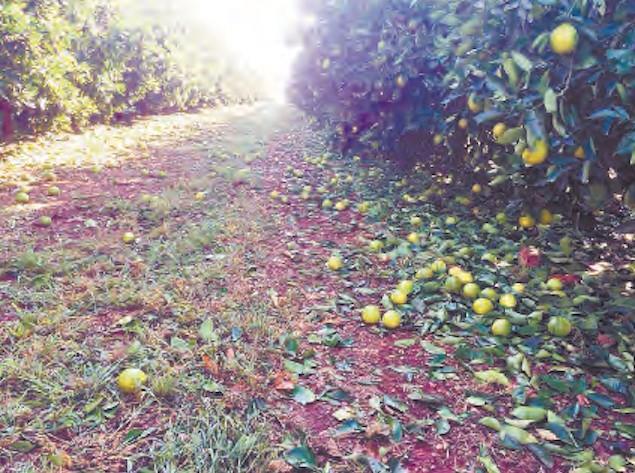Severe Hailstorms: Repairing Pool And Lawn Damage

Table of Contents
Assessing Hail Damage to Your Pool
Before you begin repairs, a thorough inspection of your pool for hail damage is crucial. This careful assessment will help determine the extent of the damage and guide your repair strategy. Remember to take detailed photos of all damage for your insurance claim. Look for these common signs of hail damage:
- Dents or punctures in the pool liner: These can range from small imperfections to large tears, affecting both the aesthetics and the structural integrity of your pool.
- Cracks in the pool coping or surrounding decking: Hailstones can impact the coping stones, causing cracks or even dislodgement, creating safety hazards and potential leaks.
- Damage to the pool pump, filter, or other equipment: Hail can damage exposed pool equipment, potentially leading to malfunction or complete failure. Check all electrical components for damage.
- Broken or dislodged lights: Underwater pool lights are particularly vulnerable to hail damage. Inspect for cracks, broken lenses, or dislodged fixtures.
Consider contacting a professional pool service for a comprehensive hail damage inspection. Their expertise will ensure you don't miss any hidden damage and can provide an accurate assessment of the repair costs.
Repairing Hail Damage to Your Pool
Repairing hail damage to your pool can range from simple DIY fixes to extensive renovations requiring professional intervention. The extent of the damage will dictate the necessary course of action.
- Minor dents in the liner: Small dents in the vinyl liner may be repairable with a specialized pool liner patching kit. Follow the manufacturer's instructions carefully.
- Larger tears or punctures: Larger tears or punctures in the pool liner will require professional repair or, in severe cases, complete liner replacement. A qualified pool technician can assess the damage and recommend the best course of action.
- Damaged coping or decking: Hail can crack or break pool coping stones and surrounding decking. Repairing or replacing damaged sections is essential for safety and aesthetics.
- Faulty equipment: Any damaged pool equipment, such as the pump, filter, or lighting system, should be inspected and repaired or replaced by a qualified technician. Never attempt electrical repairs yourself.
Protecting Your Pool After a Hailstorm
Taking preventative measures can significantly minimize future hail damage to your pool. Investing in protection now can save you considerable expense and hassle in the long run.
- Invest in a durable pool cover: A high-quality pool cover provides excellent protection against hail, debris, and other weather-related damage. Choose a cover strong enough to withstand severe hail.
- Trim overhanging branches: Overhanging branches from trees pose a risk of falling onto your pool during a hailstorm. Regular trimming minimizes this hazard.
- Consider installing a stronger, more resilient pool fence: A sturdy fence can help protect your pool from debris and even deter some hail damage, especially for above-ground pools.
Assessing Hail Damage to Your Lawn
After a severe hailstorm, a thorough inspection of your lawn is necessary to identify the extent of the damage. This assessment will help you determine the appropriate repair and restoration strategies. Look for these common signs of lawn damage from hail:
- Bruised or flattened grass blades: Hail can bruise or flatten grass blades, causing them to appear brown or discolored.
- Damaged or broken plant stems: The impact of hailstones can damage or break the stems of plants, shrubs, and flowers.
- Soil erosion: The force of the hailstorm can wash away topsoil, exposing roots and making plants vulnerable.
Repairing Hail Damage to Your Lawn
Repairing your lawn after a hailstorm might involve a combination of techniques, depending on the severity of the damage. Patience is key, as lawn restoration takes time.
- Regular watering: Provide consistent watering to help stressed plants recover from the impact of hail. Deep, infrequent watering is often more beneficial than shallow, frequent watering.
- Applying fertilizer: A balanced fertilizer can promote new growth and help your lawn recover its lush appearance. Choose a fertilizer specifically formulated for your grass type.
- Reseeding or sodding damaged areas: Severely damaged areas may require reseeding or sodding to restore the lawn's density and health.
- Pruning or removing severely damaged plants: Remove any plants that are severely damaged beyond repair. Pruning can help encourage healthy regrowth in less severely damaged plants.
Conclusion
Severe hailstorms can cause considerable damage to your pool and lawn, but with proper assessment and repair, you can restore your outdoor space. Remember to thoroughly inspect for damage, document everything for insurance claims, and don't hesitate to call in professionals for assistance with complex repairs. By following these steps, you can successfully navigate the challenges of severe hailstorm damage and enjoy your pool and lawn once again. Don't delay – start assessing your hail damage today!

Featured Posts
-
 Ines Reg Et Chantal Ladesou Les Tensions De Mask Singer
May 12, 2025
Ines Reg Et Chantal Ladesou Les Tensions De Mask Singer
May 12, 2025 -
 Debbie Elliott Biography And Career
May 12, 2025
Debbie Elliott Biography And Career
May 12, 2025 -
 Crazy Rich Asians Tv Series Everything We Know So Far
May 12, 2025
Crazy Rich Asians Tv Series Everything We Know So Far
May 12, 2025 -
 Is Adam Sandler The Leader America Needs Right Now
May 12, 2025
Is Adam Sandler The Leader America Needs Right Now
May 12, 2025 -
 Montego Bay A Jamaican Gem
May 12, 2025
Montego Bay A Jamaican Gem
May 12, 2025
Latest Posts
-
 Kyle Tucker And Chicago Cubs Fans A Look At Recent Comments
May 13, 2025
Kyle Tucker And Chicago Cubs Fans A Look At Recent Comments
May 13, 2025 -
 2025 Cubs Heroes And Goats Game 25 Recap
May 13, 2025
2025 Cubs Heroes And Goats Game 25 Recap
May 13, 2025 -
 Analyzing The 2025 Cubs Performance In Game 16
May 13, 2025
Analyzing The 2025 Cubs Performance In Game 16
May 13, 2025 -
 Dodgers Defeat Cubs 3 0 Yamamotos 6 Inning Masterpiece And Edmans 3 Run Homer
May 13, 2025
Dodgers Defeat Cubs 3 0 Yamamotos 6 Inning Masterpiece And Edmans 3 Run Homer
May 13, 2025 -
 2025 Chicago Cubs Deconstructing Game 16s Wins And Losses
May 13, 2025
2025 Chicago Cubs Deconstructing Game 16s Wins And Losses
May 13, 2025
